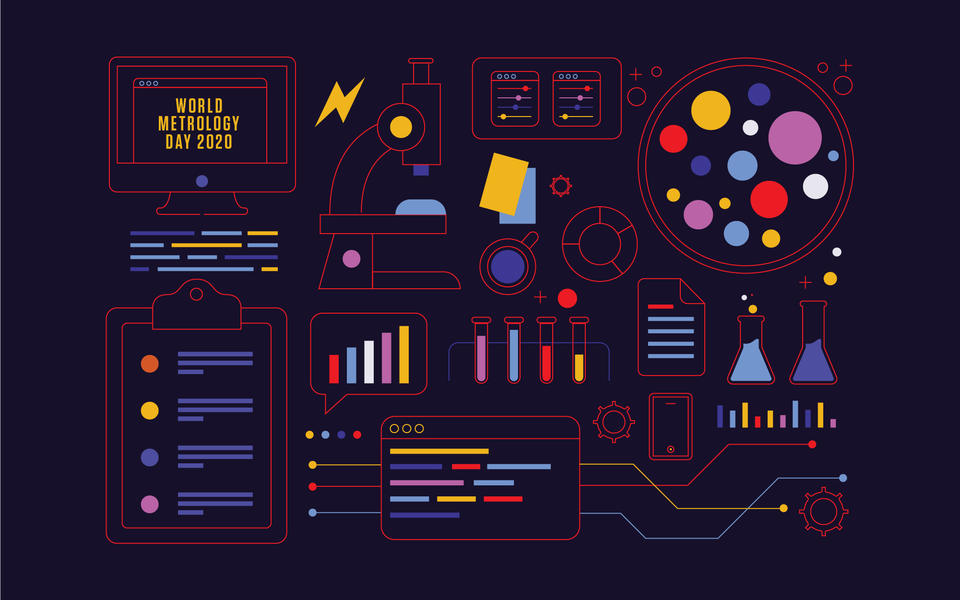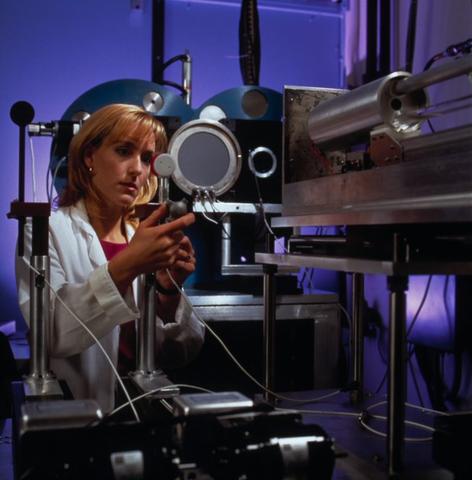Taking Measure
Just a Standard Blog

Today is World Metrology Day. Have you put up the decorations and baked a cake yet to celebrate?! You should!
Metrology, the science of measurement, makes modern life possible. Measurement science provides the common language that enables manufacturing quality, equitable global trade and the worldwide exchange of scientific data and knowledge.
World Metrology Day commemorates the day in 1875 when 17 nations, including the United States, came together to establish a single, global uniform measurement system, the metric system, which became the International System of Units (SI). Yes — the USA is indeed a metric nation!
Today, measurement scientists from around the world are coming together virtually, this time to deal with a pandemic. With such an urgent need, measurement science is what provides the foundation to accurately compare and interpret research data with colleagues. This makes technical communication reliable, which is critical to manufacturing the vaccines, tests and therapeutic treatments needed for everyone’s health care. I am excited and humbled to be part of the National Institute of Standards and Technology (NIST), America’s national metrology institute, in supporting the advancement and integrity of our worldwide measurement system. Colleagues in industry and throughout our research community are working tirelessly to fulfill demands for the personal protective equipment, vaccines, therapeutics, testing and knowledge we need to meet the challenges of this new virus.
Here at NIST, we are helping drive the development of biotechnology standards with the International Organization for Standardization (ISO) and other standards-developing groups. NIST provided the underpinning technical expertise and measurement capabilities necessary to develop standards critical for molecular diagnostics to ensure that test kits for COVID-19 produce accurate results. These standards were developed in collaboration with other international metrology institutes, as well as key industry and academic stakeholders from around the world.
We’re working to reduce any systematic errors in test data, to advance new measurement tools for detecting the virus and antibodies, and to understand the virus and its mutations so it can effectively be targeted with vaccines and therapies. NIST and the White House Office of Science and Technology Policy (OSTP) are leading efforts in artificial intelligence for evaluating search algorithms to optimize identification of the most relevant COVID-19 research and clinical data.
NIST has performed measurement studies needed to benchmark the performance of personal protective equipment to keep health-care providers and first responders safe. And NIST developed and provided tools to support hospital facilities and providers in optimizing sterilization protocols that ensure equipment safety and minimize infection risks.
At NIST, we have a long history of supporting the quality of medical care. NIST standards and calibration protocols for radiation are essential for effective nuclear medicine therapy and diagnostic procedures. In radiation therapy, for example, we led the national and international communities in developing standards for the radioactive seeds used in the treatment of prostate cancer. NIST work helped medical professionals deliver localized radiation directly to a tumor, and with little effect on surrounding tissue. NIST research and standards provide physicians and patients with new options to treat cancer without more invasive surgery or the side effects of chemotherapy.
Where does NIST come in, exactly? NIST develops the primary standards for radiation measurements. Radioactive seed manufacturers periodically send batches of their seeds to NIST for calibration to measure the dose of radiation seeds emit. This gives patients and medical professionals confidence that they are getting the right radiation dose for the treatment plan. It also allows seed manufacturers to innovate and continuously improve their products.

Another example of NIST’s role in medical metrology is in diagnostic radiology. Typically, in the United States, women over the age of 40 have annual mammography exams to screen for breast cancer. The Mammography Quality Standards Act of 1992 required the U.S. Food and Drug Administration (FDA) to set up a certification and inspection program for over 10,000 U.S. mammography clinics. NIST has a dedicated facility for mammographic X-rays where we generate carefully characterized reference X-ray beams to calibrate the instruments used to measure the X-ray exposure from each mammogram machine in the country.
NIST has worked with the FDA and the American Association of Physicists in Medicine to establish a network of accredited laboratories. Now, mammography machines certified in accredited facilities in the U.S. are traceable with an unbroken chain of measurements back to the SI through NIST. This way, if a woman receives a mammogram from any of the accredited facilities in the U.S., she can be confident that she is receiving the proper X-ray exposure.
Another critical contribution is NIST’s work with radiopharmaceuticals. These are drugs labeled with radioactive tracers that are used in tens of millions of nuclear medicine procedures annually in the U.S. for imaging of brain, heart, bone, lung and many other tissues. After injection, the radiopharmaceutical moves to and concentrates in the organ doctors want to examine. Cameras are used to take an image of the patient’s body that helps doctors diagnose disease progression, a broken bone or an obstruction in a coronary artery.
NIST works with the FDA and the U.S. radiopharmaceutical industry to prepare radioactive Standard Reference Materials (SRMs) that the industry uses to calibrate each dose of radiopharmaceutical that is administered in the U.S. Some of these radioactive materials have a half-life as short as six hours. NIST has to work fast to standardize these materials and deliver the SRMs to industry partners, which allows them to maintain their quality systems for U.S. health care.
NIST has also worked to establish magnetic resonance imaging (MRI) measurement standards, reference materials and data guidelines to improve the quality and the ability to quantitatively compare MRI results. This work by NIST will ultimately result in improved health care and testing effectiveness.
These are just a few of the countless examples of how NIST advances measurement systems and standards to improve health and quality of life. NIST and its partners in the public and private sectors create, maintain and distribute the products and services that enable industry to innovate and provide the highest-quality, most advanced biomedical products in the world. In response to COVID-19, researchers are working to move medical technology from the laboratory to the health-care sector at unprecedented speeds.
NIST is right there, at the leading edge, accelerating innovation by ensuring we have the tools, measurements and standards that will enable solutions to come onto the market and be globally accepted.
Metrology and standards make all this happen!
During this particular time, I’m glad to know that the metrologists of NIST, together with so many collaborators in government, industry and academia, are working to establish the measurements for the scientific foundation of trust upon which our medical professionals rely.
To your health! Happy World Metrology Day!
About the author
Related Posts
Comments
Thank you Dr. Water Copan about the article on NIST. Role and contribution of NIST in the field of Metrology is matter of research. Measurements science, calibration and reference material are silent activities but are behind the quality, innnovations. NIST measure are efforts of touch to make human life safe and better.More articles should be regularly published about research and programs of NIST.
Simply because we were one of the cosigners, in my mind, does no make us an SI country. We are probably one of the least in regard to the everyday use. What percentage of our population over 10 yrs can tell us how mant cm in an inch or how many pounds in a liter. How many of us are aware that a recent [fairly] change on how we actually determine the base units.
I like the enthusiasm however, unfortunately, here in the United States we have a long way to go before I would classify the United States as finally being in sync with the world using SI ( Metric System) I'm pleased to see the movement towards using the SI but why are we so subtle about it? I'm 53 yrs old and I know and use the SI system as much as I can in our backwards country! I've noticed subtle changes but again the problem is like they did in the 70s stop with the conversion, that's what messes these people up. It's simple Think Metric!






Thanks! This is informative.